Chrysler Halcyon Concept: Sustainable "Harmony"
I'll admit, I struggled for a headline for this one. Press releases are, across the board, buzzword-heavy, and that's never more true than when it comes to concept cars.
It makes sense -- concept cars have less in the way of concrete specs to discuss than production cars do. And it certainly applies to the Chrysler Halcyon Concept.
Chrysler to Double Its Model Count with a New EV
This is a marque which will celebrate its centenary next year with only a single model on sale in its showrooms, showing up as the Pacifica and its numerous variants. Suits in corner offices seek to right this detail with an electric vehicle they will unveil early next week.
Opinion: Making Sense of the Stellantis Auto Show Decision
News broke earlier this week that Stellantis would pull out of auto shows, including the upcoming Chicago Auto Show, for the foreseeable future.
Era Ends as Final Dodge Challenger Comes Off The Line
We've slowly been saying goodbye to the Dodge Charger, Chrysler 300, and Dodge Challenger -- now we can officially wave goodbye to the platform, including the Hemi.
Chrysler Will Heavily Update the Pacifica As It Temporarily Becomes a One-Model Brand
Chrysler’s vehicle lineup has dwindled to the point that the automaker is left with a single horse in its stable: The Pacifica minivan. However, despite the contraction in its product offerings, the automaker isn’t going away, and neither is its van. The minivan pioneer has big plans for its family hauler, and company CEO Christine Feuell recently told journalists that it would roll out a mid-cycle update for the vehicle soon.
The Final Chrysler 300 Recently Rolled Off the Production Line
The Chrysler 300 is joining its corporate siblings in being discontinued after the 2023 model year, and the automaker recently announced that the last car has left the production line. Workers at the Brampton Ontario Assembly Plant recently gathered to commemorate the end of the line for the car, giving it a sendoff before the automaker moves further toward electrification.
Junkyard Find: 1991 Dodge Grand Caravan LE
We've had a run of European machinery in this series lately, with six of the last ten Junkyard Finds coming from across the Atlantic ( one from Sweden, one from Italy, two from West Germany and two from France), so today it's the turn of that most Michigandic of machinery: A Chrysler minivan.
Mopar Teases Electric Crate Swap, Maybe
The annual SEMA show in Las Vegas is rapidly approaching, meaning car companies will surely be dangling umpteen teaser images of what they’ve in store for this soirée in the desert. Stellantis is usually good for an outrageous reveal or three, and they’ve started off this year with an electrified bang.
Chrysler Slings Updates at Pacifica for 2024
While the majority of Americans have long since decamped in favor of crossovers and SUVs, there remains a dedicated cadre of buyers committed to the family minivan. For 2024, Chrysler is rewarding them with a smattering of updates to its Pacifica.
QOTD: Can Chrysler Get Its EV Act Together?
With the exception of the Jeep 4xes that have hit the market in recent years, Stellantis has seemed behind the curve when it comes to electrification. Sure, the Dodge Hornet offers a PHEV powertrain, as does the Alfa Romeo Tonale. And the Dodge Daytona concept previews an EV shift.
On the other hand, Chrysler is hitting the reset button on its EV plans. The Airflow concept won't be the company's first EV.
Report: First Chrysler EV Won’t Be the Airflow
With the Chrysler Airflow debuting during the CES expo in 2022, practically everyone assumed it would be the brand’s first all-electric model. The concept looked more like a prototype than some fantastical model intended for production decades down the road and even came with a limited spec sheet offering figures that seemed to exist within the confines of reality.
But it’s not the vehicle the brand intends to lead with. Stellantis’ chief design officer, Ralph Gilles, has confirmed that Chrysler’s new CEO, Chris Feuell, wanted something completely different that would differentiate the brand from everything else on the market.
Used Car of the Day: 1985 Chrysler New Yorker
It's time to party like it's 1985.
If you have $2,500 you're willing to part with and the time to spend on a project car.
QOTD: Is Chrysler Still Viable?
Chrysler's big news at the 2023 Consumer Electronics Show was -- a concept interior.
Not a car. Just an interior. We'd hoped to see more related to the Airflow, though we do note that perhaps this interior previews the Airflow's cabin.
Chrysler at CES: Synthesis Concept Demonstrates Future Interior Design
If you were hoping that Chrysler would show off a new model at the 2023 Consumer Electronics Show (CES) in Las Vegas, well we've got disappointing news for you.
Owners of Older Dodge and Chrysler Cars Told Not to Drive Until Takata Airbags Can Be Replaced
The Takata airbag problem was one of the most publicized automotive catastrophes ever. Major automakers issued massive recalls to replace the dangerous airbag units, which could rupture and send shrapnel into the passenger cabin. Anyone alive in 2015 would’ve been unable to ignore the constant drumbeat of press around the recalls, so it’s surprising to hear that we’re still trying to round up owners of affected vehicles.
Stellantis Hints at New or Updated Chrysler EV at CES 2023
The Consumer Electronics Show, or CES, has long been an opportunity for people to discover new video games, computers, and more, but it’s increasingly becoming a significant platform for automaker product announcements. We already knew Stellantis was bringing concepts from Ram and Peugeot, but the automaker recently announced that it would also showcase its other brands. We could even see a new or updated EV from Chrysler.
Rare Rides Icons: In Memoriam, The Chrysler LX Platform (Part IV)
The Chrysler 300 was the first production car to use the LX platform and was arguably the most important as well. We discussed the debut and styling of the exciting new 300 in our last LX platform installment. When it debuted in 2005 with retro-inspired muscle car styling and a good deal of Mercedes-Benz componentry, it garnered an immediate and positive impression from the buying public with its looks. But did it fare as well on its interior? Let’s find out.
Rare Rides Icons: In Memoriam, The Chrysler LX Platform (Part III)
Thus far in our Chrysler LX platform coverage, we’ve discussed two designs that never made it past the working concept stage. The first of those was the Airflite, a Crossfire-styled hardtop hatchback, while the second was the larger Nassau which was also a hardtop hatchback. Neither of them had pillars, and both focused on the future of car design.
Journalists made incorrect predictions at the debut of both concepts and stated that the Airflite (in 2003) previewed the upcoming 300’s styling, while the Nassau (in 2007) was a sneak peek at a new styling direction for the 2008-ish revamp of the then-current 300. While those assumptions were wrong, a never-debuted Nassau design from 2000 was the actual genesis of the 300’s styling. And it appeared on the new LX platform in 2005.
Rare Rides Icons: In Memoriam, The Chrysler LX Platform (Part II)
As the Chrysler LX platform heads toward its demise after the 2023 model year, Rare Rides Icons is making its way through the various large-ish vehicles that used the platform these past two decades. The starting point for this series are the original LX concepts that never made production. We covered the Airflite (basically a Crossfire hardtop hatchback) last week. And today we’ll take a look at the larger, more luxurious, and more obscure Nassau concept (of which there were two).
Rare Rides Icons: In Memoriam, The Chrysler LX Platform (Part I)
Big change is in the air at Chrysler and company these days, as the rear-drive LX platform heads off into the sunset. With a longevity of two decades - far beyond the reach of the majority of current platforms - it seems fitting to eulogize the LX at this juncture. The end of the LX represents more than just the end of the rear-drive internal combustion vehicle at Chrysler.
It’s also the end of two gasoline-powered Dodge muscle cars, the Charger and Challenger (only the Charger returns as an EV). The LX is also the basis of the last two remaining full-size American sedans: Charger and 300C. In 2023 all the last LX-based vehicles will roll off the line, wearing their various gaudy special edition gingerbread. Before that time comes, we should consider all the cars that brought us to this point.
C That? Chrysler Has One Last Fling With the Hemi-Powered 300C
Fans of four-door sedans with outsized powerplants will have one more chance to put their name on the title of a Hemi-powered Chrysler 300C. Set to be produced for just the 2023 model year, this brute in a suit is intended to be a 392 cubic-inch farewell to Chrysler products on the LX platform.
Opinion: These Brands Won't Make It in the US (as EVs)
Unless you’ve been living under a rock since 2019, you’ve probably realized that just about every major carmaker has plans to go “fully electric” at some point in the rapidly approaching future. That’s going to mean big changes in the way we buy and use cars, obviously— but change is hard, and not every company is going to be willing or able to make those changes.
That equally obvious fact begs the question: who’s not gonna make it?
Abandoned History: The Chrysler UltraDrive Transmission (Part II)
We finish up our Abandoned History coverage of the long-lived UltraDrive transmission today. The pursuit of simplification, modernization, less weight, and better fuel economy lead to the creation of the electronically controlled four-speed A604 marketed as UltraDrive. The idea floated around at Chrysler in the Seventies and then was greenlit and put into production (before it was ready) by an eager Lee Iacocca. A case of unfortunate timing, the new transmission arrived in 1989 at a time when there was almost no exciting news in Chrysler’s product portfolio. Thus the UltraDrive name was coined by marketing, and the new and advanced transmission was featured heavily in the company’s PR materials in 1989 and 1990.
The UltraDrive’s debut version was prone to numerous types of failures because of fluids and sensors, build quality, parts, really everything. But engineers at Chrysler quickly massaged the A604 into the improved 41TE that was ready for use midway through the 1990 build year. UltraDrive was up and running within acceptable reliability standards per Chrysler. Clearly, it was time to create more UltraDrive variations!
2022 New York Auto Show Recap - The City That Never Sleeps Takes a Nap
The 2022 New York Auto Show isn’t the first major auto show to be held since COVID-19 shut the world down in March 2020 – Chicago had shows in 2021 and 2022, and Los Angeles was in its usual slot last year. And there was Motorbella in Detroit last summer.
Still, for whatever reason – the loosening of COVID restrictions, the fact it was the first New York show since COVID, the presence of NY-based journos who don’t deign to travel west of the Hudson for those other shows – there was a pre-show feeling that this was it. This would be the show that marked the return of normalcy. Not LA in 2021 or Chicago just a couple of months ago – no, it would be this one.
2022 New York Auto Show Week: Chrysler Goes With the (Air)Flow
Another day, another teaser. Thankfully, this will all be over by tomorrow’s happy hour.
This time, it’s Chrysler. Which is showing the Airflow Concept.
Rare Rides Icons: The History of Imperial, More Than Just a Car (Part XXII)
Today we reach the 22nd and final installment in the Imperial series. In our last edition, we reviewed the development and birth of the final production car to wear the Imperial name: The super-extended K-car platform known as the Y-body. Lee Iacocca was keen on the idea of a full-size luxury sedan for the elderly customer, but Chrysler had neither the resources nor the platform to do it properly. Thus the Y-body appeared, and its angular and pencil-thin shape went on sale in 1990 alongside the similarly lengthened Chrysler New Yorker Fifth Avenue. Speaking of angles, let’s talk about that sweet money-saving clip swap action.
Abandoned History: The Chrysler UltraDrive Transmission (Part I)
The recent Rare Rides Icons post on the 1990 Chrysler Imperial Super-K Gingerbread Cookie Edition generated a few comments not only about the subject in question but its four-speed UltraDrive transmission. It seems more than one of you wants a discussion – no – an essay on the UltraDrive. Wish granted! Here we go.
Rare Rides Icons: The History of Imperial, More Than Just a Car (Part XXI)
We find ourselves at the final two installments of the long-running Imperial series today. It’s been almost six months since the first Imperial entry, when a new model was dreamt up by Chrysler’s founder as competition for the likes of Pierce-Arrow and Studebaker. The Imperial name outlived most of the Twenties competition it was designed to beat, though along the way it drifted both nearer and further to the original mission. The concluding entrant into the Imperial lineage was definitely the weakest ever. K-car time, commence!
Abandoned History: Chrysler and the Colt, Captive Economical Import Time (Part VII)
We arrive at the end of our Dodge Colt journey today. Colt started in 1971 as a cooperative program to provide Mitsubishi with a sales outlet in North America, and Chrysler with a compact and fuel-efficient car it didn’t have to design or build. Over the years the Colt evolved with the needs of the consumer and branched out into several different body styles.
Eventually, the tides shifted. Mitsubishi established their own dealerships in the United States (but not Canada) and started selling identical cars as were on Dodge/Plymouth dealer lots. Then, as Eagle came into being it also needed product to sell. Chrysler turned Eagle into its de facto outlet for imports and Mitsubishi cooperative products: Colts of regular and wagon persuasion became Eagles called Vista and Summit, in addition to their Dodge and Plymouth twins.
Last time we left our tale it was the dawn of 1993, and Colts were badged at Eagle dealers as a new generation of Summit. The Vista Wagon name was dead, now called Summit Wagon. Dodge, Plymouth, and Eagle dealers had an exciting new Colt as well! But it didn’t last long.
Rare Rides Icons: The History of Imperial, More Than Just a Car (Part XX)
Here we are, the 20th installment of the Imperial series. We’ve covered the Imperial’s inception as a coach-built car for the wealthy, through its Fifties rebirth as an independent brand with hand-built quality that rivaled the best luxury car makers had to offer. From there Imperial’s tale was ups and downs (mostly downs) as Chrysler’s luxury arm continually found itself less independent, and more tied to the New Yorker.
But after its sad Seventies cancellation, it was time for an Eighties rebirth under the direction of CEO Lee Iacocca. He was determined to make the best, most exclusive American personal luxury coupe money could buy. To date we’ve learned about the angular bustle back exterior, the J-body Cordoba platform underneath, and the Cordoba-plus leather-lined interior, by Mark Cross. Today we continue with Iacocca’s close personal friend, Frank Sinatra (or ‘FS’ if you’re talking badges.)
Abandoned History: Chrysler and the Colt, Captive Economical Import Time (Part VI)
We rejoin the world of the Colt today, specifically the lineup on sale at various Dodge, Plymouth, and now Eagle dealers in the United States and Canada in the early Nineties. The addition of Eagle to Chrysler’s brand portfolio for the 1988 model year had a direct effect on the future of Colt: Almost immediately the Colt sedan was drafted onto the Eagle team, where it became the more expensive Summit.
Remaining as Colts in the US in 1990 were the hatchback and the dated Colt Vista and wagon. Canadians were offered the contemporary Colt sedan and hatchback, while the Colt Vista was sold over the border as the Eagle Vista Wagon. The Vista Wagon was accompanied in Canada by the old Colt sedan from the mid-Eighties, branded as Eagle Vista sedan and offered only as a very basic vehicle. We pick up at the beginning of the 1991 model year.
Rare Rides Icons: The History of Imperial, More Than Just a Car (Part XIX)
We return to our Imperial series again today, and the third installment on the all-new personal luxury coupe Lee Iacocca launched in 1981 to resurrect the historical Imperial name. Unlike every other Imperial to date, the new one was available only in two-door coupe guise. The new car had the dual mission of bringing luxury car credibility back to Chrysler, and grabbing some high margin luxury coupe sales from GM and in particular, Lincoln and the Continental Mark VI. We’ve covered the exterior and the underpinnings, so today we slide into the interior, which is most definitely not covered in Rich Corinthian Leather.
Abandoned History: Chrysler and the Colt, Captive Economical Import Time (Part V)
When we last left off in the tale of Dodge, Plymouth, and Eagle’s various Colt branding adventures, it was the late Eighties. After a wave of modernization in 1984-1985 where the first Colt sedan appeared and the range extended into the larger and very forward-thinking Colt Vista, Mitsubishi got in on the Colt action and sold a hatchback with its OEM diamond star up front and Mirage lettering on the back. As the Nineties approached, it was time for a new generation of Colts, and more options from a hot new brand: Eagle.
Rare Rides Icons: The History of Imperial, More Than Just a Car (Part XVIII)
In our most recent installment of our long-running Imperial coverage, the Eighties dawned with a resurrection of the Imperial name and the debut of an exciting new personal luxury coupe. Chrysler’s new chairman Lee Iacocca was determined to recreate the runaway success he’d had at Ford with the Lincoln Continental Mark III. But that meant a simultaneous ask that luxury coupe buyers ignore the very recent financial troubles that plagued the Detroit automaker. And while the exterior of the new Imperial coupe was all bustleback and new angles, its platform and mechanicals were not quite as exciting. Let’s talk about Mirada, Cordoba, and the reliability benefits of electronic fuel injection.
Rare Rides Icons: The History of Imperial, More Than Just a Car (Part XVII)
In our last Imperial entry, we found the brand’s run came to an end. In production since 1926 and an independent brand since 1955, the Imperial fizzled out to nothing after 1975. Chrysler closed its luxury Imperial division, and the once proud two- and four-door Imperials were stripped of some standard features and rebranded into the Brougham trim of the New Yorker. The Imperial name had come a long way from its beginnings as a super luxurious coach built car for the wealthy, and ended up as a slightly nicer New Yorker with more formal front and rear clips. But 1975 was not the end of the Imperial’s story, as a particular Chrysler CEO had big Imperial aspirations. To get to that point for Imperial, let’s talk about Ford.
Abandoned History: Chrysler and the Colt, Captive Economical Import Time (Part IV)
By the early Eighties Chrysler was deep into its product partnership with Mitsubishi, which in North America was most visible via the mutually beneficial Colt. A lineup of rebadged Mitsubishis, the Colt expanded from its rear-drive beginnings in 1971, morphing into a rear- and front-drive mix by the end of the Seventies. In the earliest part of the Eighties, the line was consolidated into a single front-drive hatchback model. Around the middle of the decade, it was time for a fifth-generation Colt and some more lineup expansion. But this time, Dodge and Plymouth dealers wouldn’t be the only ones selling a Colt.
Rare Rides Icons: The History of Imperial, More Than Just a Car (Part XVI)
We return to the Imperial story once more today, at a worst-ever moment. The year is 1974, and the future is bleak for the large prestige car. The economy is down, fuel prices are up due to a recent oil crisis, and the market’s trend is toward front-drive vehicles and sedans of a smaller size. What was Chrysler to do with its flagship Imperial in that sort of environment? Kill it off, that’s what.
Abandoned History: Chrysler and the Colt, Captive Economical Import Time (Part III)
After Mitsubishi vehicles made their way to Dodge and Plymouth dealerships as the Colt in 1971, Chrysler expanded the fledgling model’s lineup quickly. Nine years after its introduction, the third generation Colt offerings (two different Mitsubishi models) were being discontinued. Accompanying the old Colts on the lot were all-new ones, though old and new alike were sold as ’79 model year cars. It’s Twin Stick time.
Rare Rides Icons: The History of Imperial, More Than Just a Car (Part XV)
We return to the Imperial’s saga once again today, at a very low point for the brand. Though the Fuselage Look of 1969 had propped up Imperial’s sales and generated consumer interest, sales were in decline after the ’69s debut. Chrysler put less and less money into its flagship, as parts sharing increased while options and trims did the opposite. There was a second version of the Fuselage Look for 1972 that showed as longer, lower, and heavier than ever before. And though the new metal buoyed sales slightly, the U.S. car market as a whole saw record sales in 1972 and 1973. 1973 was the last such record year for America, and it coincided with the last Fuselage Imperial. Chrysler had a decision to make about its flagship brand.
Rare Rides Icons: The History of Imperial, More Than Just a Car (Part XIV)
In our last installment of the Imperial saga, we worked through the earliest years of Chrysler’s Fuselage Look era. The Imperial wore its hefty new styling well, even though it shared more parts and even body panels with Chrysler’s lesser New Yorker. Although the new looks were a sales hit in 1969, customers who wanted a Fuselage Imperial bought one immediately. By 1971 things were much grimmer. Imperial was relegated for the first time to a singular trim: LeBaron. A sign of the times, the brand was no longer advertised separately in marketing materials, but alongside Chrysler’s other offerings as “Imperial by Chrysler.” However, for 1972 it was time for a big update, as Chrysler tried to bump up the Imperial’s seriously sagging sales.
Junkyard Find: 2005 Chrysler Crossfire Limited Roadster
Rare Rides Icons: The History of Imperial, More Than Just a Car (Part XIII)
We entered the Fuselage Look era of the Imperial in our last installment, as Chrysler shook off the conservative and upright styling its flagship brand wore prior to 1969. Prices were notably slashed and quality suffered as Imperial shared body panels with its Chrysler siblings, incidents that in previous decades would’ve been out of the question. We pick up in 1970, for the second year of the C-body Fuselage Imperials.
Abandoned History: Chrysler and the Colt, Captive Economical Import Time (Part II)
Chrysler had its first involvement with Mitsubishi Motors Corporation in 1971. With a considerable stock purchase by Chrysler, the two companies’ long-lived captive import cooperation began. Introduced immediately to Americans in 1971 as the Dodge Colt, the nameplate was on its second generation by 1977. We pick up in the middle of that year, as third-gen Colts started to arrive from Japan. In the unusual arrangement, brand new (and differently sized) Colts were sold alongside second-gen Colts during the same model year.
Rare Rides Icons: The History of Imperial, More Than Just a Car (Part XII)
As we make our way into the 12th installment of Rare Rides Icon’s Imperial coverage, the third generation 1967 Imperial became the shortest-lived in the nameplate’s history. After the decade-long reign of the D-body, Imperial switched to the unibody C platform to cut costs, and move on from dated body-on-frame underpinnings. But it was an odd time to introduce a new car, as the C-body was no spring chicken when the Imperial debuted. More importantly, Chrysler was on the cusp of an entirely new styling direction: The Fuselage Look.
Abandoned History: Chrysler and the Colt, Captive Economical Import Time (Part I)
For over 20 years Chrysler offered various Mitsubishi offerings as rebadged captive import vehicles in the North American market. For a handful of years, a Colt at your Chrysler-Dodge-Plymouth-Jeep-Eagle-DeSoto-AMC dealer was the exact same one you’d buy at the Mitsubishi dealer across the street. Let’s take some time and sort out the badge swapping history of Colt.
Chrysler Going Electric By 2028, Airflow EV Introduced
Stellantis has announced plans to shift the Chrysler brand to an all-electric lineup by 2028, presumably because it doesn’t know what else to do with it anymore. Though, considering the make’s long and storied history, the change almost seems fitting.
When the French bought up Fiat Chrysler Automobiles from the Italians in 2021, the namesake brand had already been losing steam under the Germans. But they were adopting the company after years of mismanagement from Americans, who had taken the marque from being arguably the most luxurious and technologically advanced the United States had to one that had to be saved from bankruptcy by government intervention on more than one occasion. Suffice it to say, Chrysler has enjoyed some of the sweetest highs and pathetic lows imaginable. But it always seems to rise from the ashes thanks to some innovative decision that ultimately helps redefine the industry — which is why Stellantis is leading its own EV offensive by reviving the Airflow name.
Rare Rides Icons: The History of Imperial, More Than Just a Car (Part XI)
We return once more to Imperial today and find ourselves in 1967. The earlier portion of the Sixties was a turbulent time for Imperial, as the D-body soldiered on from 1957 through 1966 model years as the Imperial marque’s second-generation car. In 1967, Imperial’s lead designer Elwood Engel managed Imperial’s transition to a new shared platform. Say hello to C.
Rare Rides Icons: The History of Imperial, More Than Just a Car (Part X)
This 10th installment of our Imperial coverage finds us at a turning point in its styling. Virgil Exner had been fired but was allowed to stay on as a design consultant at Chrysler. Exner’s immediate replacement was Elwood Engel, who’d designed the 1961 Lincoln Continental and then jumped ship when he was not promoted at Ford. Chrysler execs wanted out of Exner’s winged, googly-eyed stylistic cave, and Engel took the aged D-body in a very different direction for 1964.
Rare Rides Icons: The History of Imperial, More Than Just a Car (Part IX)
Today marks the ninth installment in our history of Imperial, as the calendar flips over to 1961. The second generation Imperial is not quite to the middle of its tenure on its own platform, the D-body. Virgil Exner imposed a wild new styling direction on Imperial for 1960 that was both outlandish visually, and heavy-handed in its execution. “More of that,” said Exner for ’61.
Rare Rides Icons: The History of Imperial, More Than Just a Car (Part VIII)
We continue our Rare Rides Icons series on Imperial today. Starting in 1957, Chrysler’s then-separate luxury arm spent more and more time on bold styling, and less on the hand-built quality for which the company’s first cars in 1955 and 1956 were known.
Rare Rides Icons: The History of Imperial, More Than Just a Car (Part VII)
Today’s installment of the Imperial series is our seventh and coincides with the seventh generation Imperial. Officially it was the second-generation car under the new Imperial marque, an independent arm of Chrysler launched in 1955 to compete with the likes of Lincoln and Cadillac. The move to independence brought with it a resurgence of interest in the brand, as the Exner styled ’55 and ’56 Imperials stood out from the rest of Chrysler’s offerings visually, and in terms of quality and luxury. We pick up in 1957 when it was time for another new Imperial.
Rare Rides Icons: The History of Imperial, More Than Just a Car (Part VI)
Our Rare Rides Icons series on the Chrysler Imperial picks up today at perhaps the most pivotal time in Imperial’s history. As the model’s fifth generation concluded in 1954, Chrysler was also concluding development of its big secret plans for Imperial: A new luxury brand of exclusivity and prestige.
Rare Rides Icons: The History of Imperial, More Than Just a Car (Part V)
Our history of the Imperial series continues today, as Part V coincides with the dawn of the Fifties. Imperial wasn’t in the best place after its long-lived fourth-generation model was parted by the cruel reality of World War II.
But Chrysler was determined to launch the Imperial of the Fifties in a big way, with more body style availability, the return of two wheelbases, and new technology.
Rare Rides Icons: The History of Imperial, More Than Just a Car (Part IV)
After its successful introduction in the Twenties, an Airflow-shaped misstep in the Thirties, and a return to its earlier formula in the latter part of that decade, big changes were in order for the new Imperial of the 1940s.
Rare Rides Icons: The History of Imperial, More Than Just a Car (Part III)
Our series on Imperial continues today, after a strong start in the coachbuilt Twenties turned into a big aerodynamic flop in the Thirties with the Airflow Imperial. The error in judgment was immediately apparent; the Imperial with groundbreaking styling lasted only three model years.
Chrysler was determined to start Imperial over, and in its third generation returned to a much more conservative large luxury car template.
Rare Rides Icons: The History of Imperial, More Than Just a Car (Part II)
Rare Rides Icons continues the history of Imperial today, after Part I left us neatly at what would become an unfortunate aerodynamic turning point. Ready for some Airflow?
Rare Rides Icons: The History of Imperial, More Than Just a Car (Part I)
Today Rare Rides Icons features a special Chrysler that was a car, then a brand, then a car again. Throughout its varied history, Imperial always represented the best of what Chrysler offered. First, we travel back to the Twenties.
2021 Chrysler Pacifica Hybrid Limited Review - Comfort Cruising
Minivans are rarely sexy, but that won’t stop companies from trying to make them attractive, with varying degrees of success.
The gang in Auburn Hills decided that eye-pleasing design might help the 2022 Chrysler Pacifica Hybrid capture sales. With that whole “hybrid” thing thrown in for a good measure of green cred.
The approach mostly worked, at least within the limitations that the van shape imposes on creativity. The Pacifica Hybrid is, dare I say, stylish.
Junkyard Find: 1982 Plymouth Sapporo
Junkyard Find: 1991 Chrysler TC by Maserati
With The General offering a costlier-than- an-S-Class Cadillac built in Turin and Hamtramck (the two assembly lines connected via custom-built 747 freighters) as well as Italianate Buicks and Oldsmobiles in the late 1980s, Lee Iacocca decided to leverage Chrysler’s investment in Maserati to create a K-Car-based Italian sports car: the TC by Maserati. Like the Allanté, Troféo, and Reatta, the TC hasn’t held its value so well over the decades, and I find the occasional example during my junkyard travels. Here’s a crashed ’91 in a yard near Denver, Colorado.



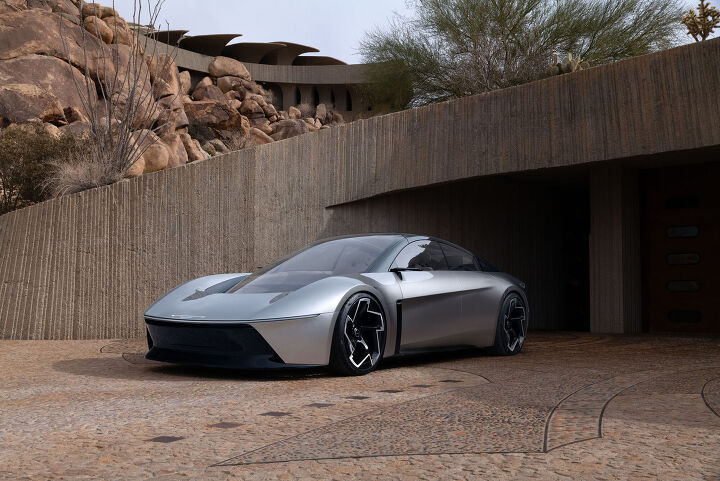

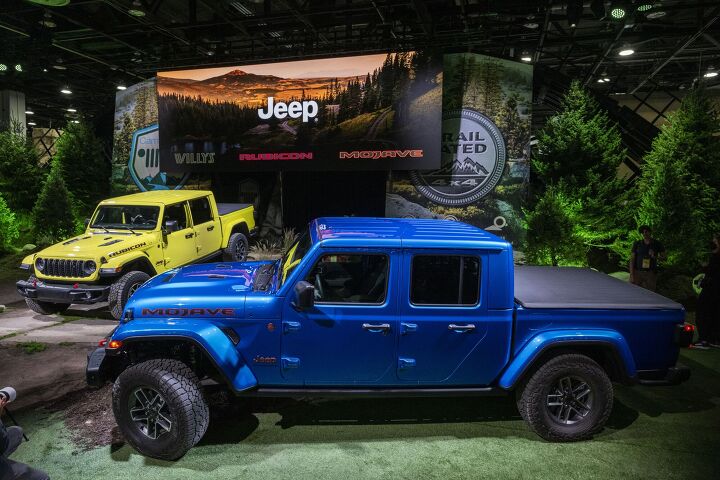

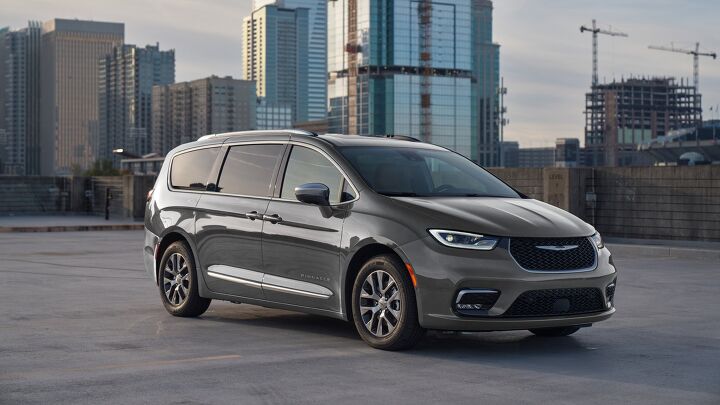
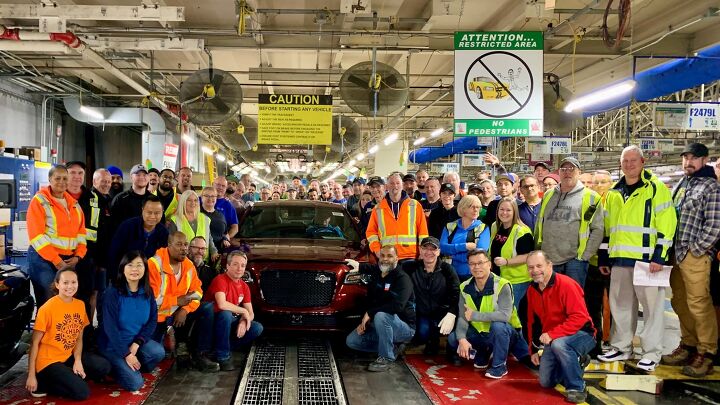
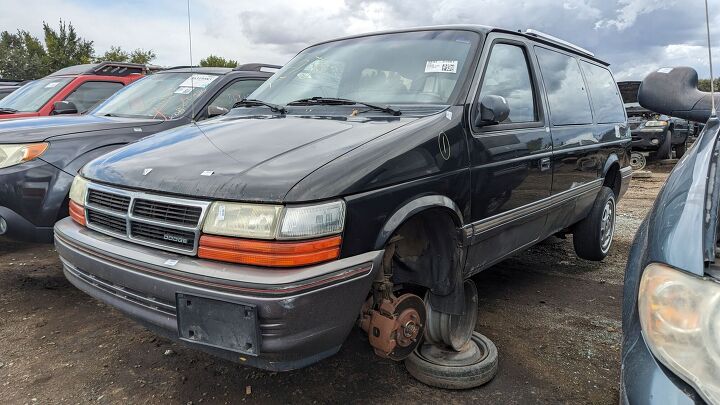









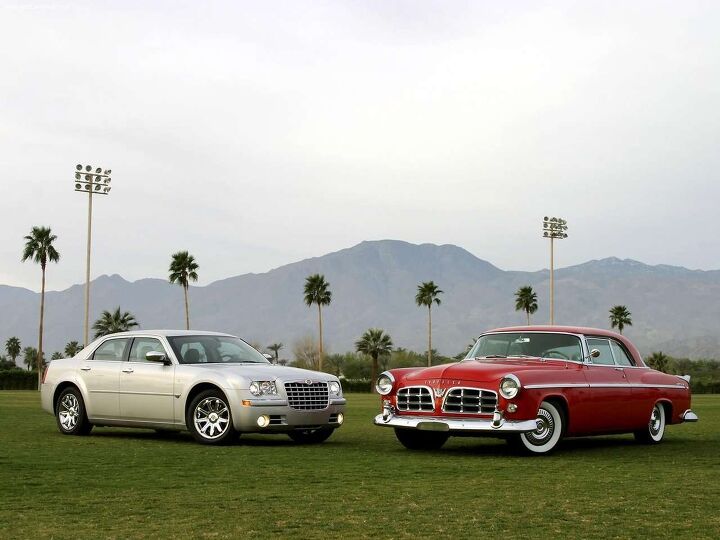

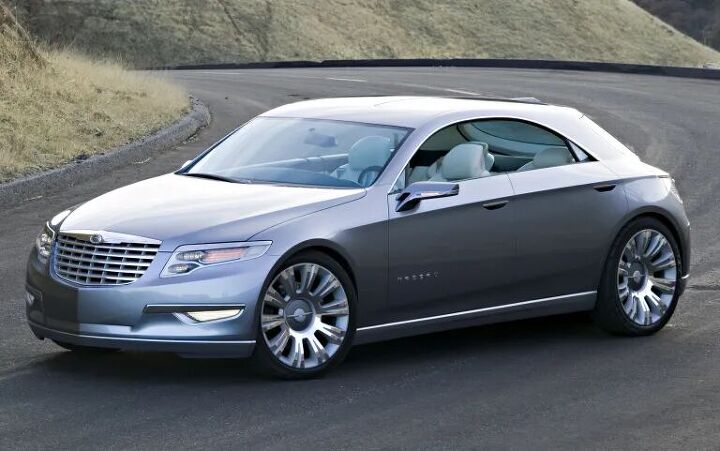


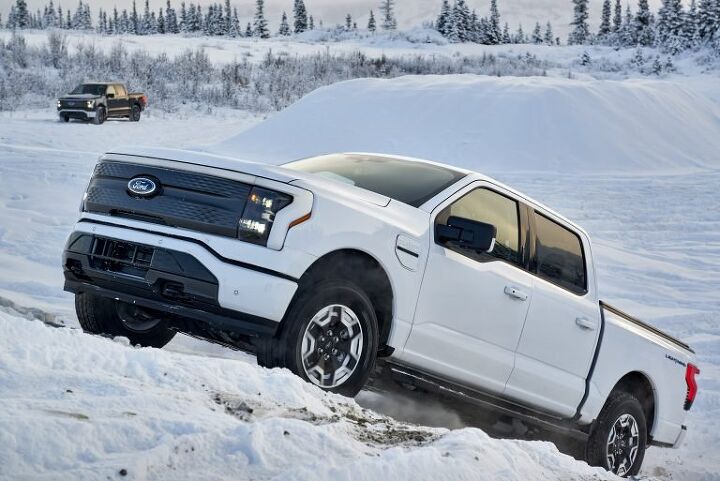
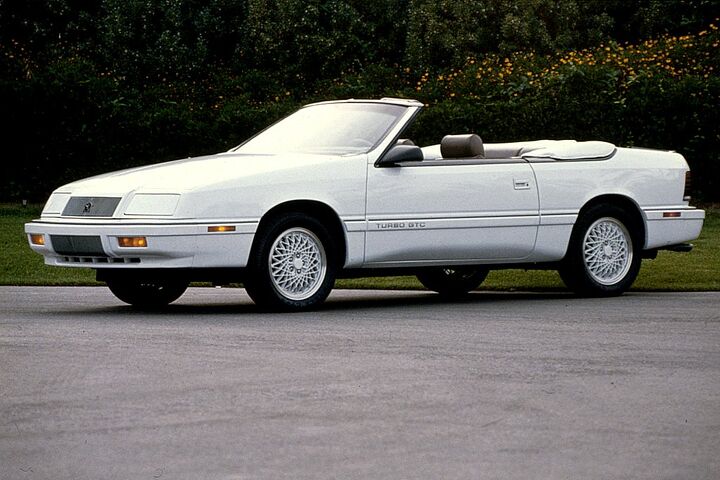
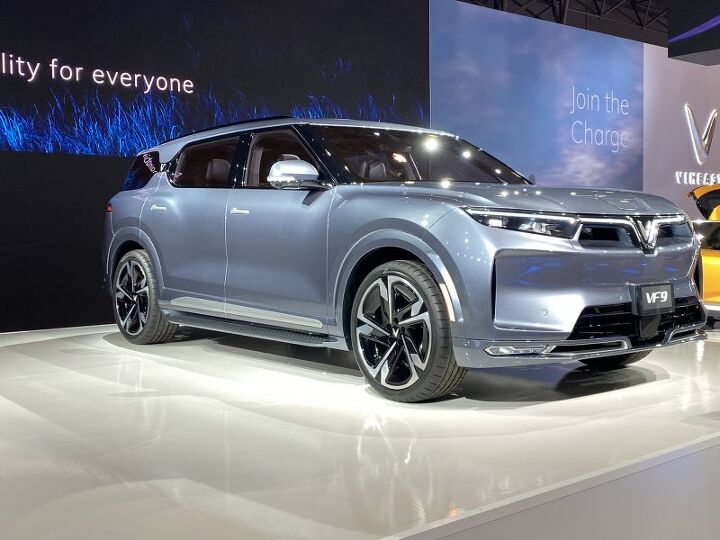



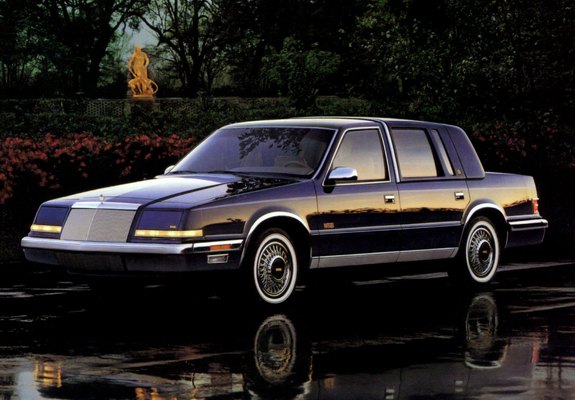

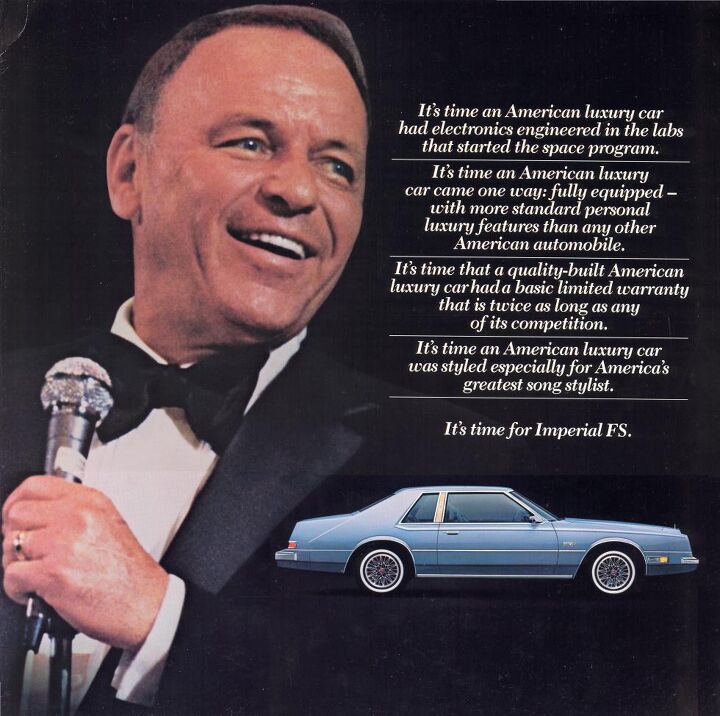
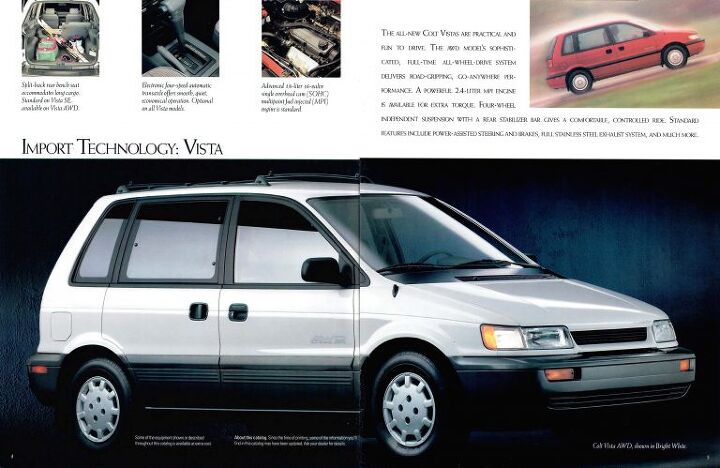

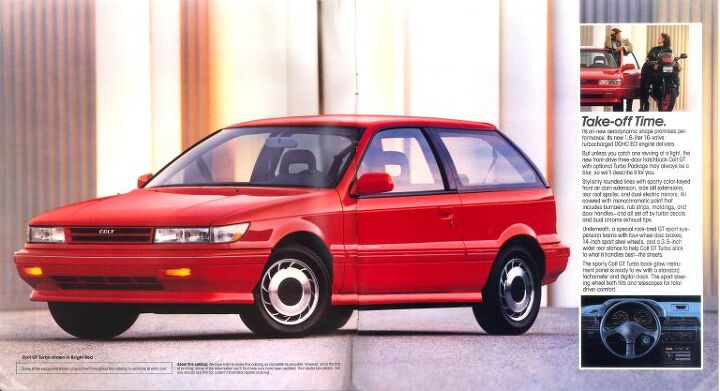


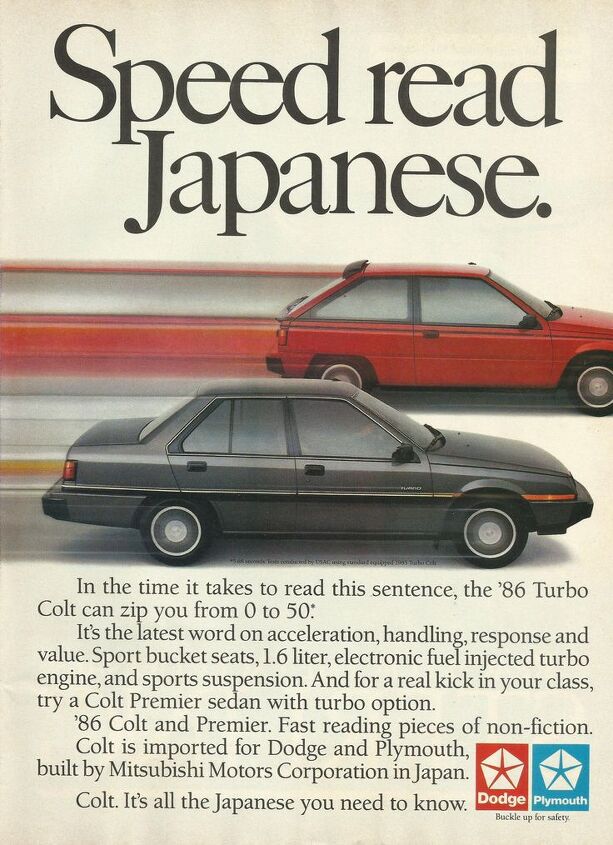

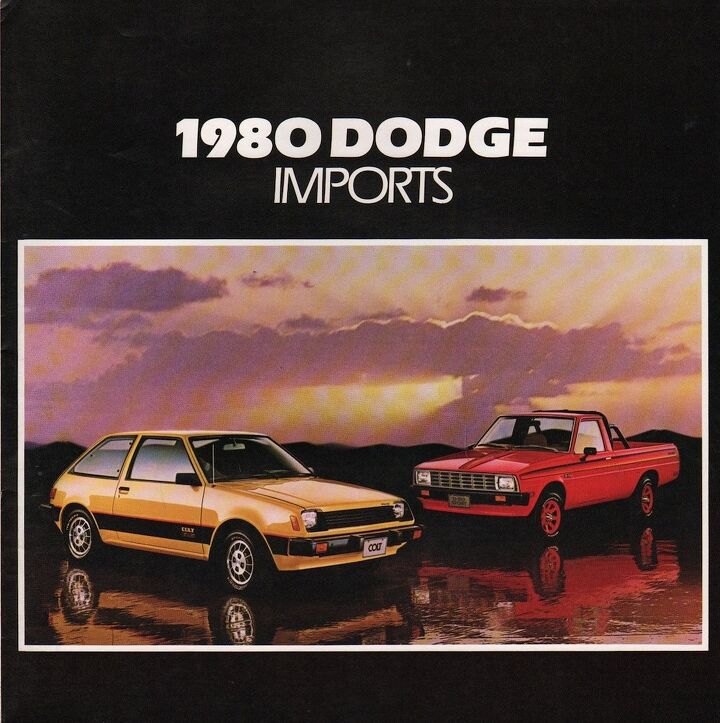
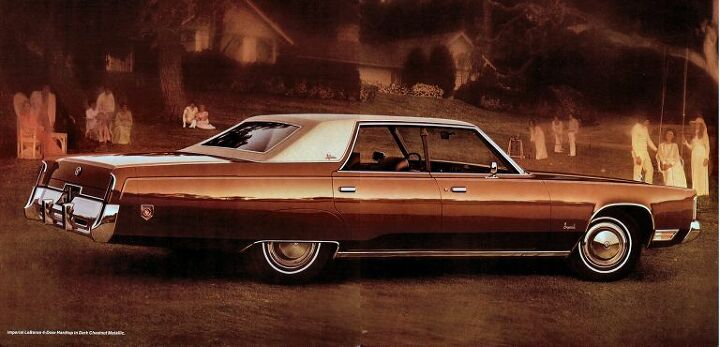
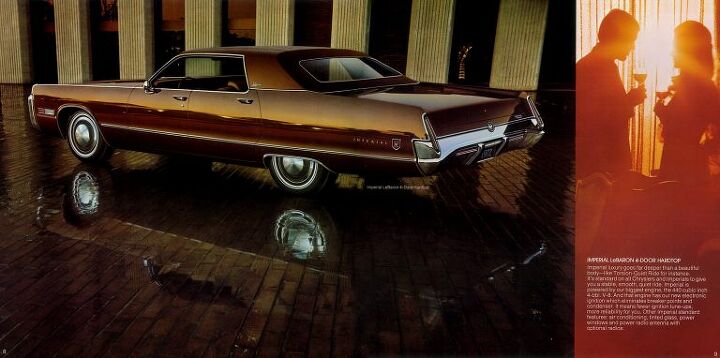
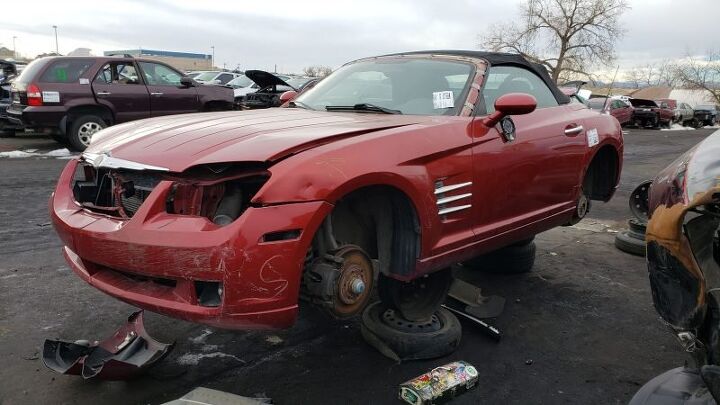
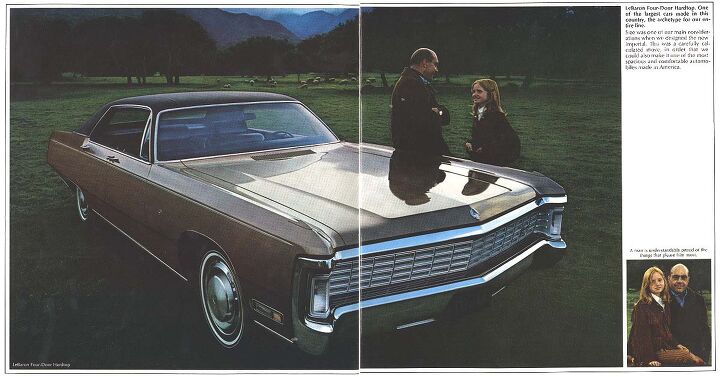
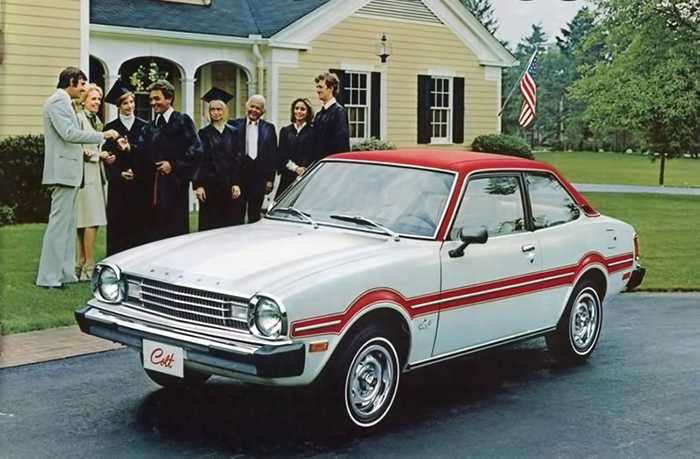

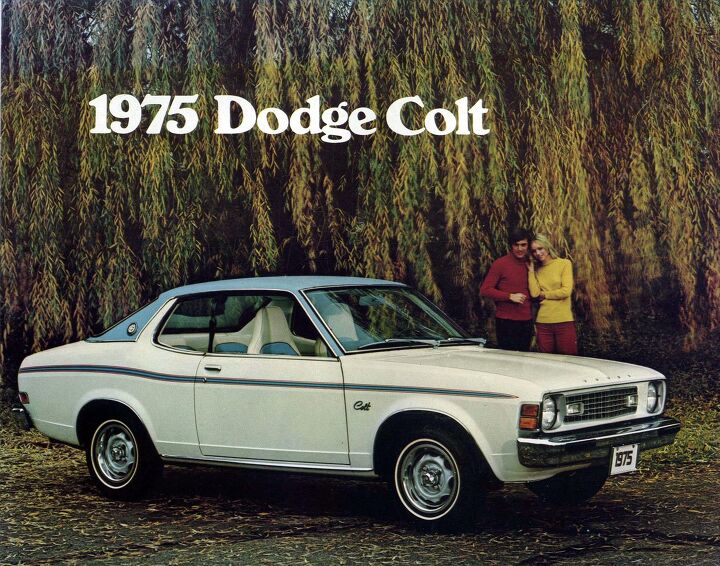


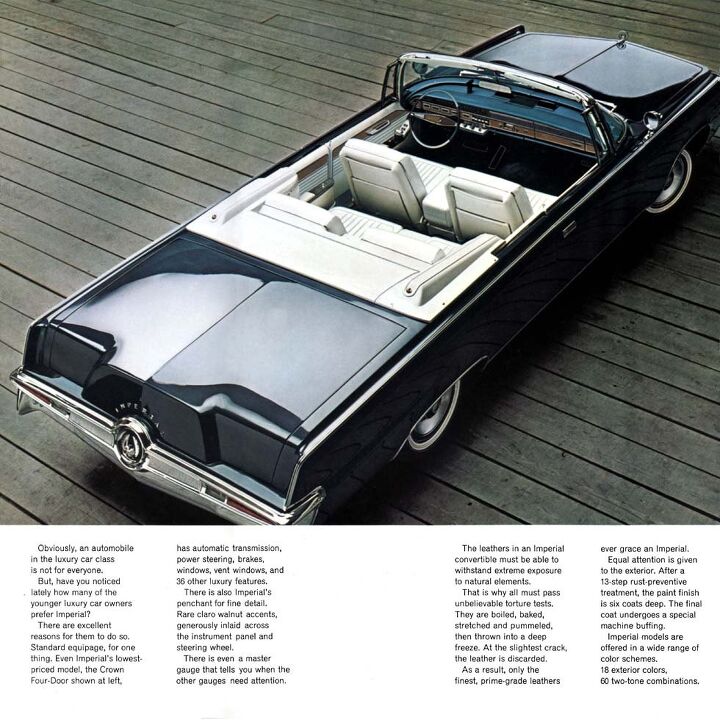



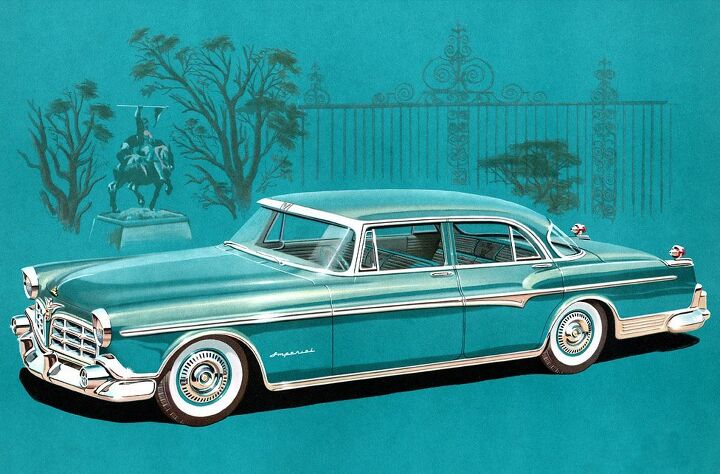


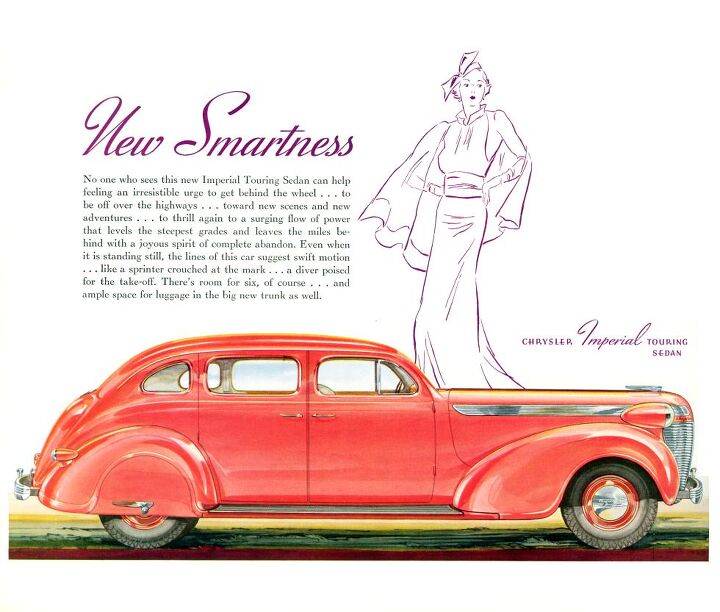
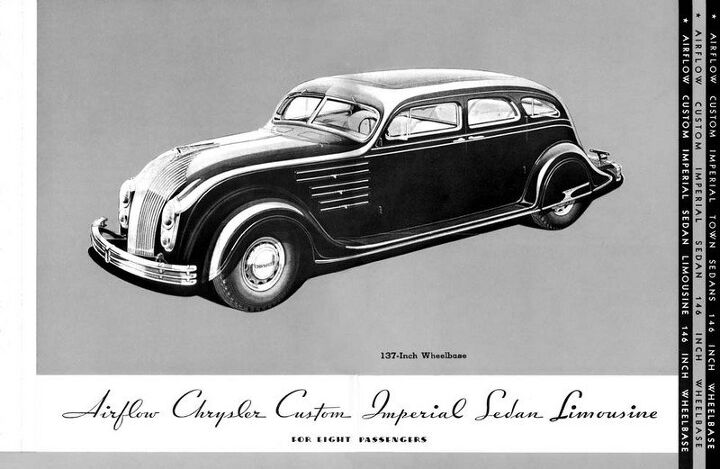

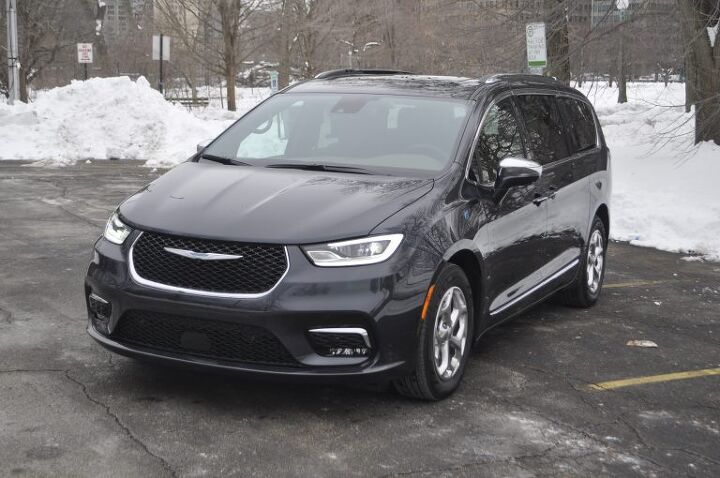














Recent Comments